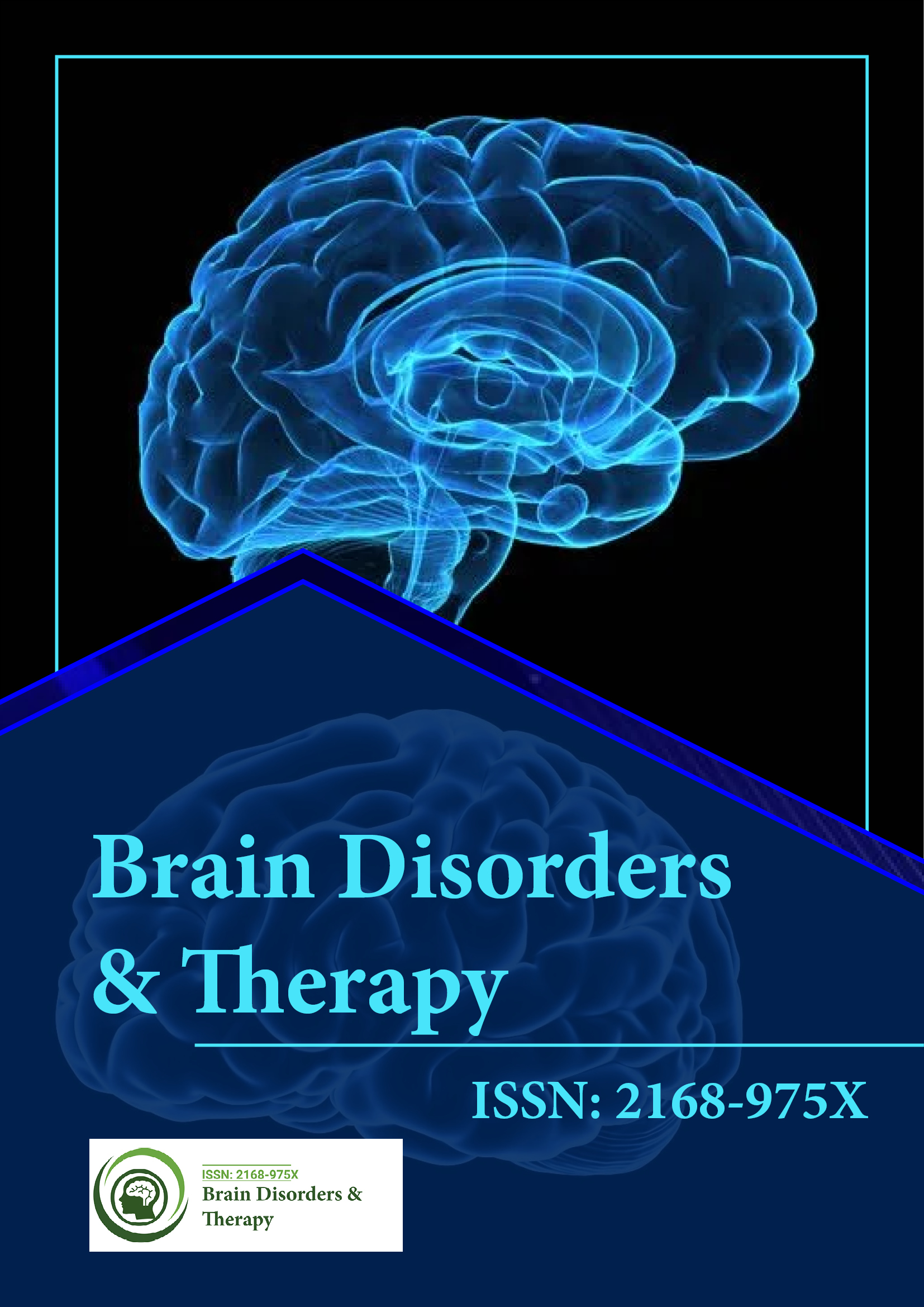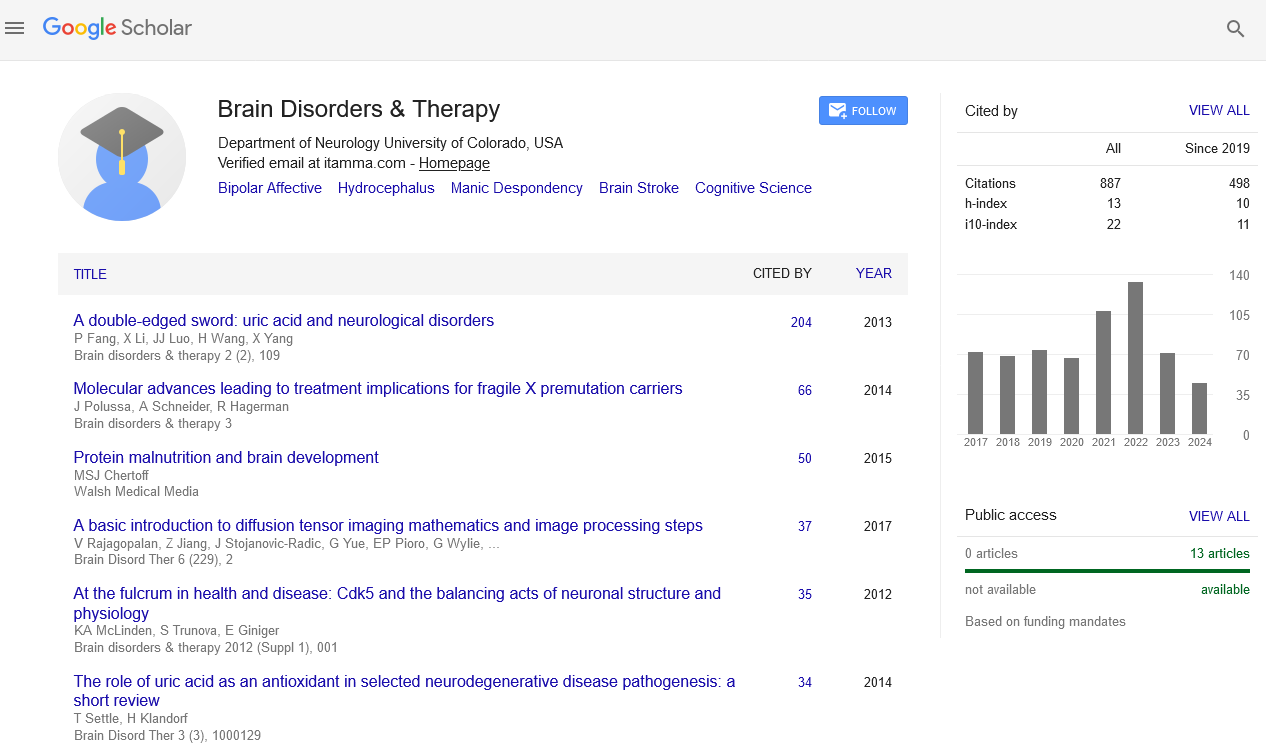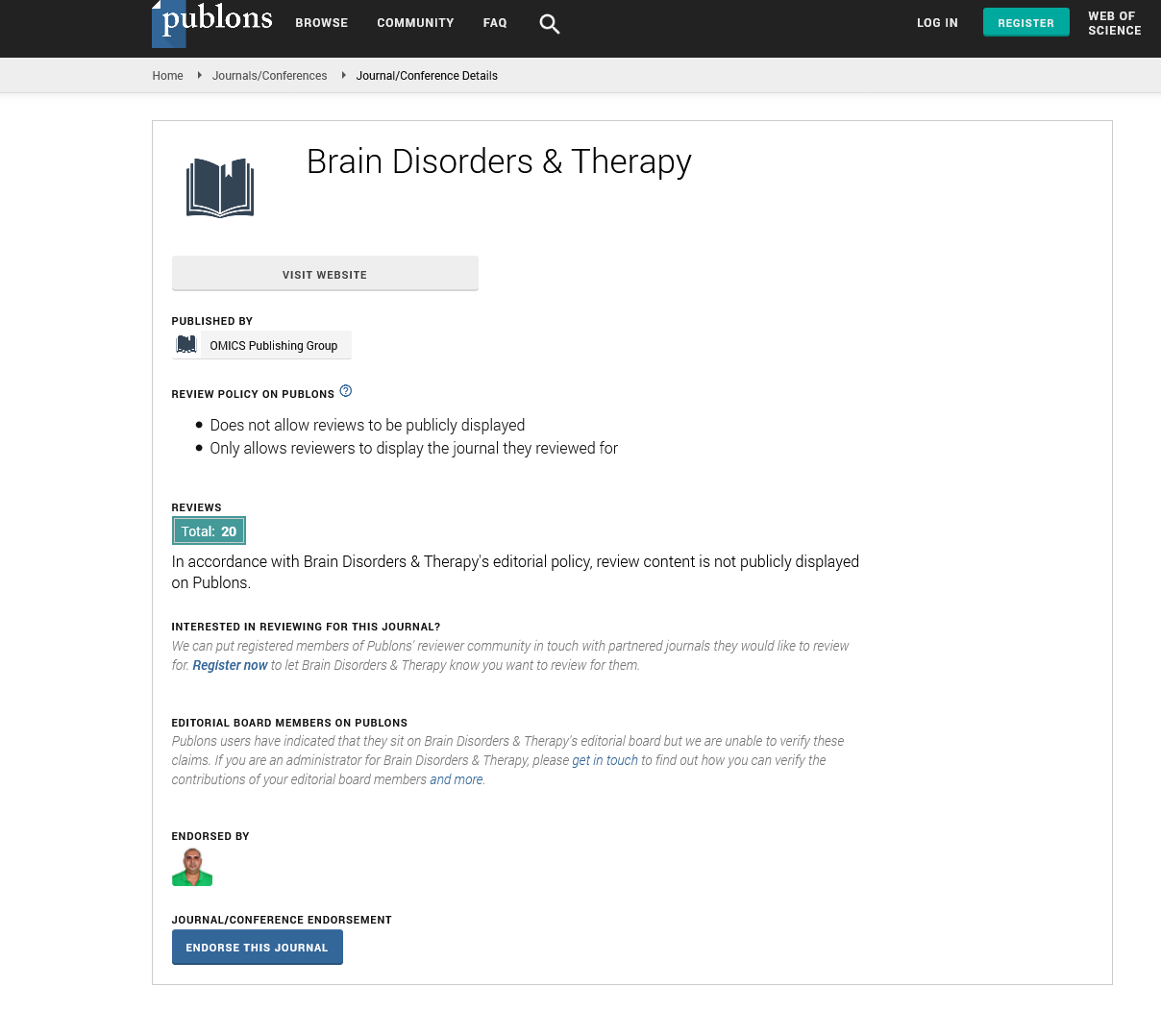Indexed In
- Open J Gate
- Genamics JournalSeek
- JournalTOCs
- RefSeek
- Hamdard University
- EBSCO A-Z
- OCLC- WorldCat
- Publons
- Geneva Foundation for Medical Education and Research
Useful Links
Share This Page
Journal Flyer

Open Access Journals
- Agri and Aquaculture
- Biochemistry
- Bioinformatics & Systems Biology
- Business & Management
- Chemistry
- Clinical Sciences
- Engineering
- Food & Nutrition
- General Science
- Genetics & Molecular Biology
- Immunology & Microbiology
- Medical Sciences
- Neuroscience & Psychology
- Nursing & Health Care
- Pharmaceutical Sciences
Opinion Article - (2024) Volume 13, Issue 3
The Impact of Immune Cell Infiltration in Traumatic Brain Injury Recovery
Zongqi Chen*Received: 26-Aug-2024, Manuscript No. BDT-24-27111; Editor assigned: 29-Aug-2024, Pre QC No. BDT-24-27111(PQ); Reviewed: 12-Sep-2024, QC No. BDT-24-27111; Revised: 19-Sep-2024, Manuscript No. BDT-24-27111(R); Published: 26-Sep-2024, DOI: 10.35248/2168-975X.24.13.272
Description
Traumatic Brain Injury (TBI) is a significant health issue worldwide, leading to a range of cognitive, physical and emotional challenges. The brain’s response to trauma is highly complex and an essential aspect of this response is the exchange between the immune system and inflammatory processes. When an injury occurs, the brain’s immune response is rapidly activated, leading to neuroinflammation. While this is initially aimed at repairing damage and restoring normal function, prolonged or excessive neuroinflammation can cause further harm, contributing to long-term complications in TBI patients.
The neuroimmune response following TBI involves the activation of various immune cells in the brain, notably microglia, which serve as the brain’s resident immune cells. These cells play a dual role in both protecting the brain from further injury and potentially exacerbating damage through the release of inflammatory substances. In addition to microglia, other immune cells such as astrocytes and infiltrating peripheral immune cells also participate in the inflammatory response.
The neuroimmune and neuroinflammatory processes that follow TBI are essential for removing debris, fighting off potential infections and initiating tissue repair. However, these processes can also lead to harmful secondary damage, which can worsen the patient’s condition. Understanding the delicate balance between protective and damaging immune responses in the brain is key to improving outcomes for individuals who suffer from TBI.
Microglia are the brain’s first responders following TBI. Upon detecting injury, microglia transition from a resting state to an activated state, where they perform several critical functions. Activated microglia migrate to the site of injury, where they engulf and remove dead or damaged cells, debris and pathogens. This process, known as phagocytosis, helps to clean up the injured area, paving the way for tissue repair.
However, microglia also release a variety of signaling molecules, including pro-inflammatory cytokines like Tumor Necrosis Factor-Alpha (TNF-α), Interleukin-1 Beta (IL-1β), and Interleukin-6 (IL-6). These molecules promote inflammation and recruit other immune cells to the site of injury. While this inflammatory response is necessary for initiating the healing process, it can also have damaging effects if it becomes excessive or prolonged. Chronic microglial activation has been linked to continued neuronal damage, the destruction of healthy brain tissue and the development of neurodegenerative conditions such as Alzheimer’s disease in individuals with a history of TBI.
In addition to microglia, astrocytes, which are a type of star-shaped glial cell in the brain, play a key role in the neuroinflammatory response. Astrocytes are involved in maintaining the blood-brain barrier, providing nutrients to neurons and regulating the extracellular environment of the brain. Following TBI, astrocytes become reactive, a process known as astrogliosis. Reactive astrocytes help to limit the spread of damage by forming a physical barrier around the injured area, known as a glial scar.
While this glial scar can protect undamaged tissue, it can also impede the brain’s ability to repair itself. The scar may block the regeneration of axons, which are essential for re-establishing communication between neurons. Additionally, reactive astrocytes, like microglia, release pro-inflammatory cytokines that contribute to the overall inflammatory environment in the brain. This can prolong the inflammatory response, further damaging surrounding healthy tissue and leading to additional complications in the recovery process.
One of the key features of the neuroimmune response in TBI is the infiltration of peripheral immune cells, such as macrophages, neutrophils and lymphocytes, into the brain. TBI disrupts the Blood-Brain Barrier (BBB), a protective membrane that normally prevents harmful substances and immune cells from entering the brain. When the BBB is compromised, immune cells from the bloodstream can enter the brain and contribute to the inflammatory response.
Conclusion
The neuroimmune and neuroinflammatory responses play a critical role in both the acute and long-term effects of traumatic brain injury. While these responses are necessary for initiating repair, they can also contribute to secondary damage and the development of chronic neurodegenerative conditions. Understanding the complex interplay between immune cells, inflammation and brain repair is essential for developing effective treatments that improve outcomes for TBI patients.
Citation: Chen Z (2024). The Impact of Immune Cell Infiltration in Traumatic Brain Injury Recovery. Brain Disord Ther. 14:272.
Copyright: © 2024 Chen Z. This is an open-access article distributed under the terms of the Creative Commons Attribution License, which permits unrestricted use, distribution, and reproduction in any medium, provided the original author and source are credited.


